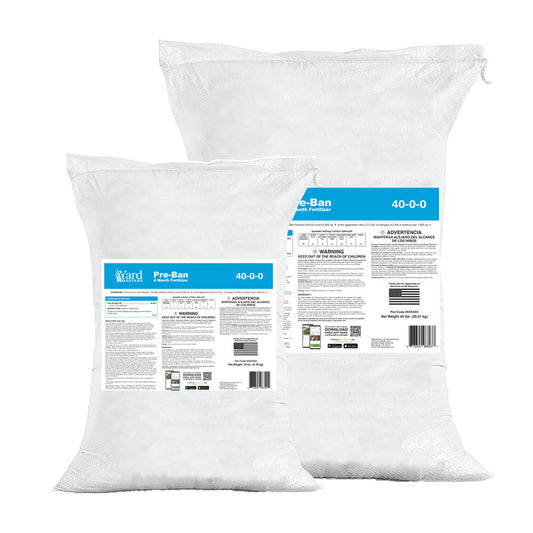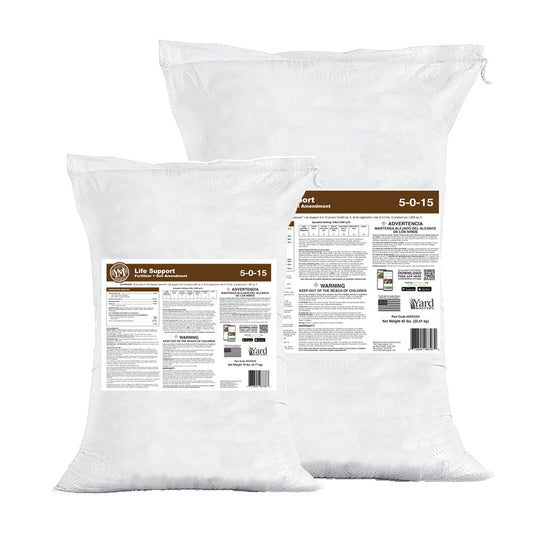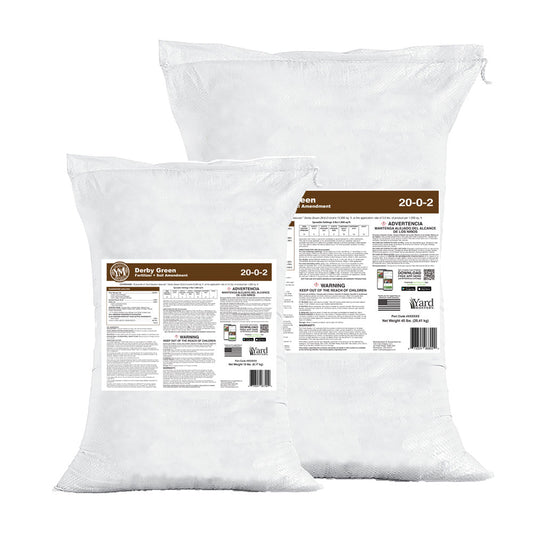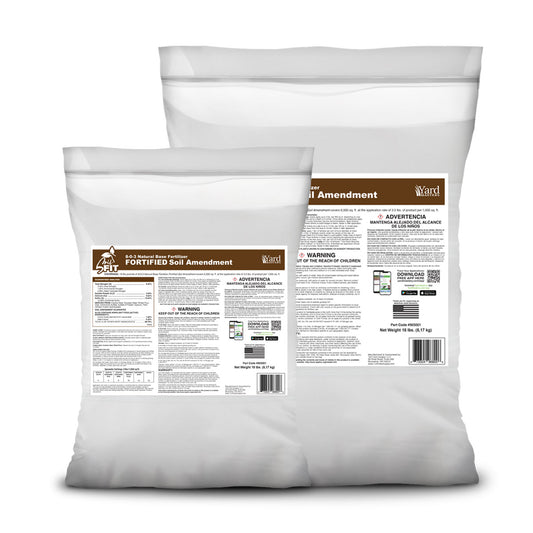Tale of the Temps:
First off, I hate this buzz-kill-cabin-fever-roller-coaster that you guys through the Midwest are feeling right now. No sooner do I clickbait you into watching a video on the new Milo while simultaneously getting you fired up to Throw’er Down… and this happens:

Look at these LCNs above. Eric David Greenup (how’d you get that last name Bruh?) is all excited just a few days ago when it’s 70 degrees in the Chicagoland area and he’s getting the jump on his 2018 domination. Then that old rascal Tim Dempski swoops in a few days later and just completely dashes all of his hopes and dreams with a single comment. I’m telling you, peeps on my FaceBook page are pretty raw and blunt sometimes!
All kidding aside, I feel for you guys; I really do. But like I said last week - if you did get out and throw down either Milo, starter fert, or most importantly, your first application of pre-emergent. That “powdered water” will do great dragging everything in nice and deep as I bet by now it’s mostly melted anyway. And that’s what I want to get across to you firstly here today:
Just because you got snow doesn’t mean you should take another 2 weeks off and come back later… you need to literally “plow through” here and stay the course, remain frosty, and keep your wits about you.
I know I’ve been hammering home on air and soil temps in these emails this spring, but as I always say, “repetition is the key to learning,” so let’s do a deeper dive on temperatures and follow some clues we can find easily here for Chicago.
Note: if you live elsewhere this still applies to you because this is really about strategy, approach and mindset - not specific geography, so stay with me!

Follow the dates here ok? So far we have evidence from the FaceBook post up top that on April 12 it was 70 degrees outside over-bye-dah-Chicagoland area. (you can hear my Chicago accent I’m sure.) We also know that as of April 11, Chicagoland was just entering the optimum window for the first pre-emergent application.
Pinch and zoom and take a look at the GDD Tracker screenshot above. Just use the visual at the bottom (green bar ‘Optimum’) and see the jump from 4/11 to 4/12? See how much of an impact just 1 day at that high outside temp had on soil temps?
Then look at the next few days: - that’s when snow came in and gave everyone back their seasonal depression. And my favorite Chicago weather savage, Ed Curran gave us a look at the snow coming in late evening on April 15:

But if you look at the soil temps back up there on the GDD screenshot - they did not fall. They just leveled off for a few days, then picked right back up. See why I don’t want you to get complacent and go back into hibernation?
Now, I’m not telling you to throw down pre-emergents on top of snow. That’d be foolish.
But I am telling you that as soon as the snow melts, have a plan to get right out there and Throw’er Down!
Here is Ed again, showing us his snowfall on April 16:

Now look at his forecast for outside air temps coming up the next few days and into the weekend:

And here are the corresponding forecasts for soil temps on the GDD Tracker. See how after 4/22 the optimum window is almost closed? YES, that’s right, the optimum window here for crabgrass pre-emergent is only 12-15 days long and we are nearing the end.

Even though nighttime air temps are forecasted to be in the thirties and day temps are only pushing mid-50s, the soil temps are still rising rapidly!
Two reasons:
- Longer days (neat data here)
- Clearing skies bring more direct sunlight. (no more grey winter skies)
And as you can see above - the optimum window is going to end very quickly here. You are still in good shape to get your first pre-emergent down and use Prodiamine, but hurry. Your second application should then be 4-5 weeks later and is going to be a Dithiopyr application.
Of course, this is definitely a great time to throw down your first fert application of the season too. Get my full plan in this cool season ebook.
Again, this isn’t about just geography - it’s more about learning to use tools like a soil thermometer (or the GDD tracker), your surroundings and signs in nature to determine what course of action is best moving forward. You will often hear me say in my videos, “know your land, learn it, love it.”
Part of that admonition involves knowing weather patterns in your area and how they are translated into your exact site situation. Large trees or areas that are heavily shaded by your house or other structures can be several days or weeks behind areas in full sun adjacent to your concrete driveway -- so it’s a good idea to get data from sources like I mention above and monitor them daily. Yes, daily. Good idea to start up that lawn journal now eh?
Note: if you are not in the Great Lakes Region, the GDD Tracker won’t help you much… but you can still use it as a directional data source. The Greencast tool is another good one and serves the entire US.
Before and After:
Next, let me offer you newbies some encouragement. Just take a look at what Matt Pitta did with his lawn in Union City, Ca (north of San Jose) from last year to this year:


Matt has some nice, thick and dark cool season grass there: a mixture of KBG and Turf Type Tall fescue. Here is what he wrote to me:
“Hey Allyn! Just wanted to shoot you a huge thanks! First time homeowner here... ...went from a weedy dirt patch of a front lawn to the thickest, greenest lawn on our court in 6 and 1/2 months. I’ve even got seed heads either from KBG or Fescue, so I must be doing something right. Keep up the same good work!”
That’s right Matt - you have really been paying attention and you know that I like to joke that “if you see seed heads in your lawn from your good turf, take that as a sign that you are doing something right because the turf is trying to reproduce and create new babies all on its own!”
You are a true #LawnSavage with that thick shag carpet you grew.
N-Ext Lawn Joo-Joo Stuff:
This week I was watching John Perry rip out St Aug tufts to examine roots in lawns treated with RGS and about had a panic attack (from all the ripping)... But he does make some great points about growing roots and using RGS as a tool to enhance them.That got me to thinking about my own roots; so I ripped some out from my back lawn where I recently threw’er down what I call an “Epic Dose Cocktail” of liquids from N-Ext. If you want to see what my #RootYanking results are looking like so far in different areas of the lawn, be sure to subscribe to the channel so you don’t miss out! It’s not super scientific but it’s fun and drives home the point about setting up the soil to provide a good foundation for stout, deep roots that help the lawn maintain health and appearance in times stress.
Any tips I give you about N-Ext products apply to ALL grass types anywhere in the US and are not limited by zone.
However, it occurs to me that some of you may be intimidated by learning this “new to me” approach to lawn care. It is quite intimidating when you try to think logically through each product in the Bio Stimulant Pack, or the Soil Activator Pack. Truth is, I recommend you throw logic out the window, become your own bartender and mix them however you like. Some have fert value and can bring a visual response, whereas others are designed to really penetrate the thatch and soil and create good, rich material for support down the road.
But at the heart of them all, is the RGS product. It’s really the foundation of any “soil based fertility program” and you can buy it stand alone for an easy addition to your current fertilization program. What I’m saying is if you want to dip your toes into the water here, and try out some soil optimization, but don’t want to over-complicate things - just get 5 gallons of RGS and spray and pray every 3-4 weeks. No heat restrictions, no rain requirements.
Mix Rate:
- 3oz/gallon
- 1 gallon covers 1,000 square feet
- If you have a 10,000 sq ft lawn you will get 21 applications with a little left over.
- 640/3 = 213
- 213/10 = 21.3
- That’s plenty enough to last you a good 2 years or more.
I did a video a few weeks ago showing you how to bucket test your sprayer so you can evenly and consistently spray your lawn with liquid. This is a skill that you should master as you progress in your lawn care nuttery and practicing with RGS is a VERY safe way to start. If you apply too much you won’t hurt anything. Apply too little, and you can easily go back and re-apply to get your walk-speed right. All while showering your lawn with sea kelp and humic acid.
Sounds like a party!

This is NOT how your spray and pray, but it can be fun.
If you want, you can also mix in your other liquid products that require blanket sprays including insect control for nuisance pests like ants, fleas, ticks and even mosquitos (yes, treating your lawn with this will cut way back on mosquito populations around your home - especially if you have a super thick lawn) Just add in your insect control concentrate right along with your RGS and blanket spray away!
With that, I hope you’re having an awesome week and no matter where you live, may your domination be strong and true. The season is upon us, let’s get after it!







